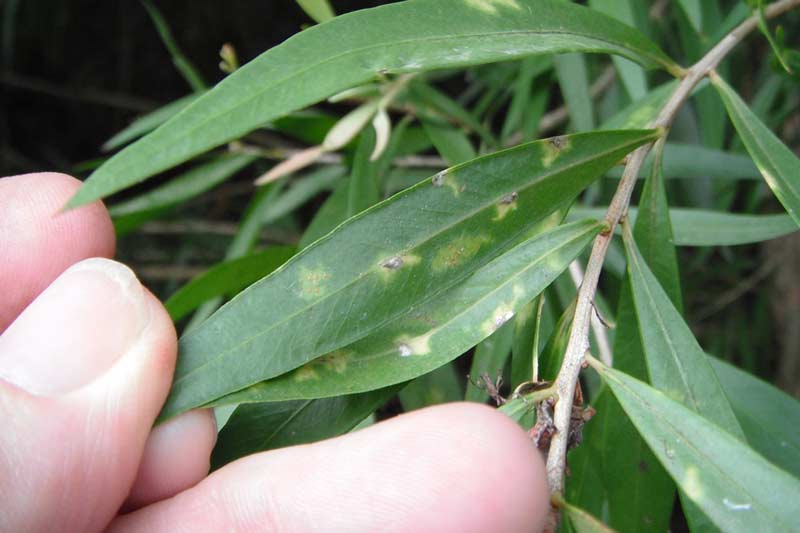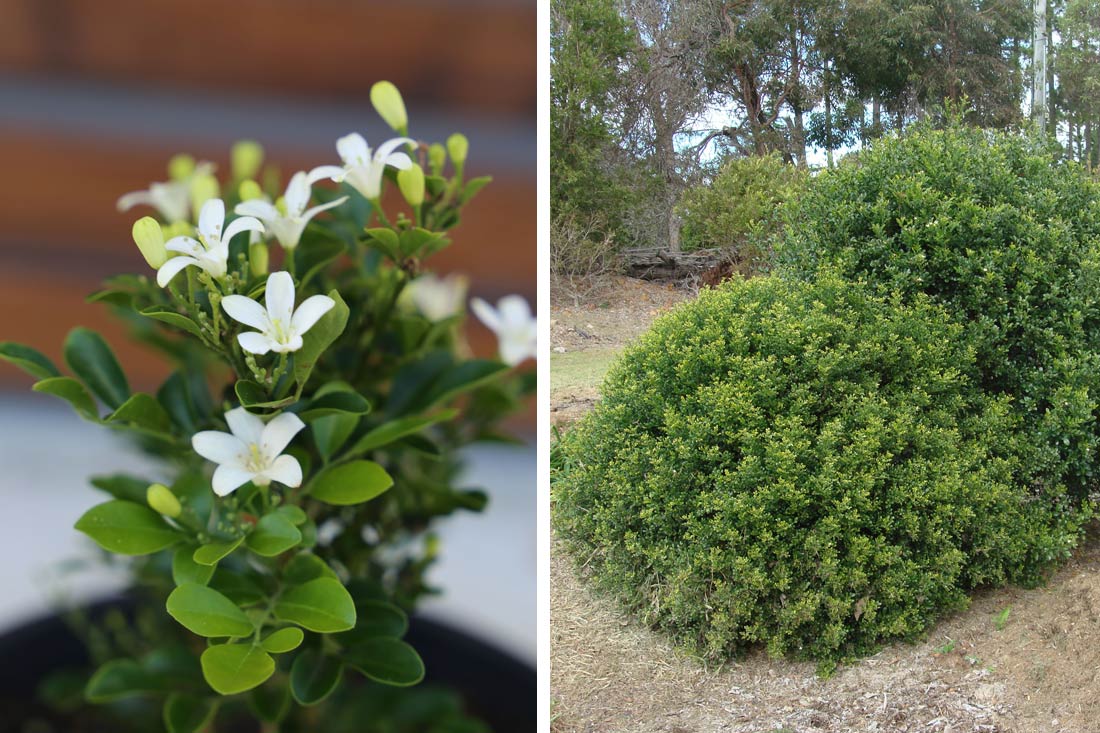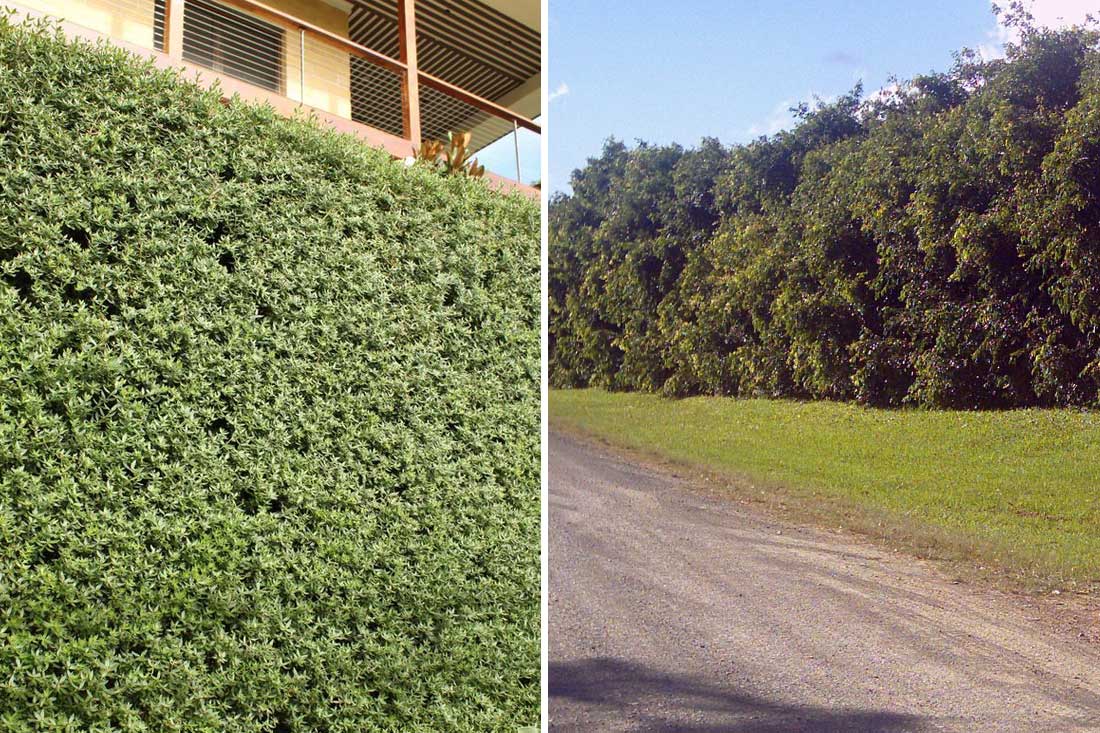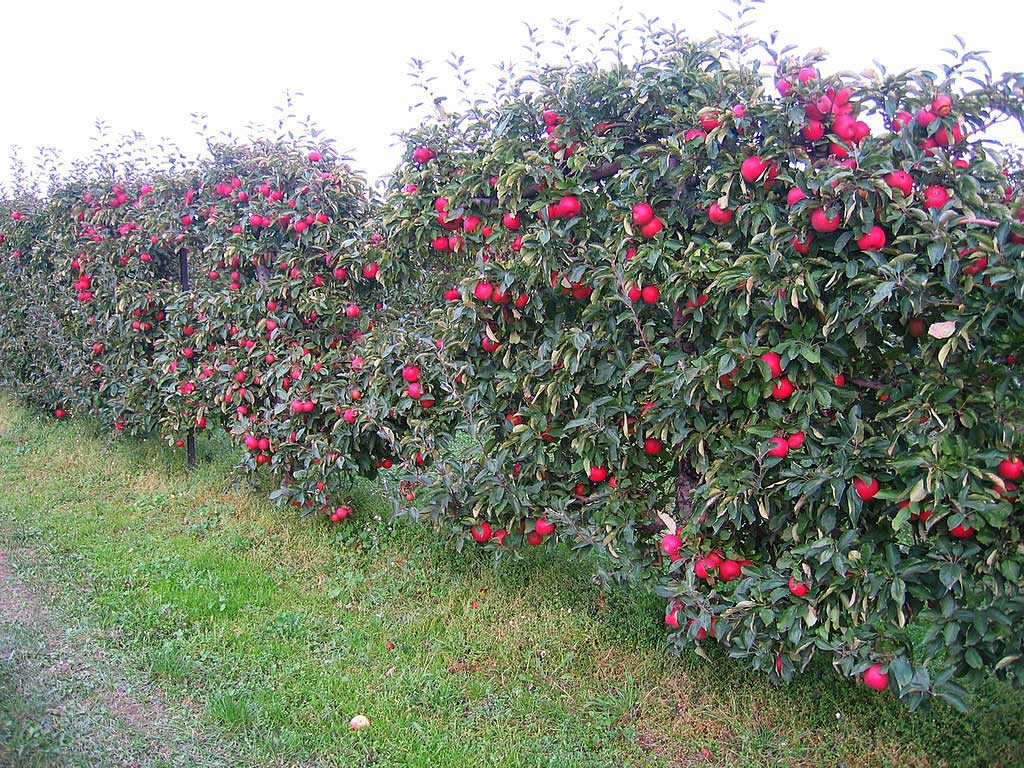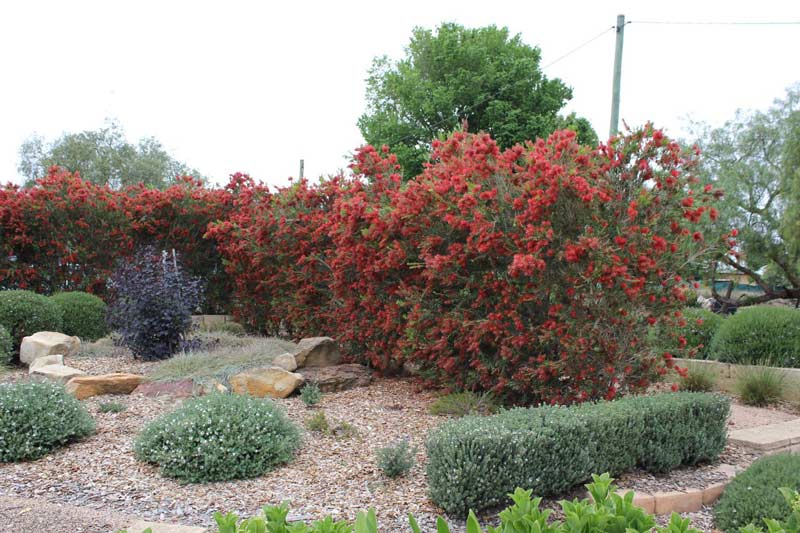Are you struggling to bring you bottlebrush tree or plant back to life? Maybe its experiencing some dieback, or maybe it’s just a bit lacklustre. In any case, this article will teach you what you need to get your bottlebrush (also known as callistemon) looking its best again.
Overview of Bottlebrush Trees
Callistemon species, affectionately termed bottlebrushes due to their iconic cylindrical flower arrangements, are trees and shrubs in the myrtle family, with relatives including eucalypts, lilly pillies and tea trees.
They’re well loved in Australian landscapes because they’re considered low maintenance with less pruning, feeding, and irrigation needed than other alternatives. While they can live without feeding and irrigation, they look their best when they’re watered and fed well with an organic fertiliser that will condition the soil.
Contrary to popular belief, callistemons love a regular NPK ratio, so save the “native” fertilisers for Proteaceae members.
Sawfly larvae can decimate the leaves on your bottlebrush plant. A number of caterpillar pests can munch on the leaves such as these.
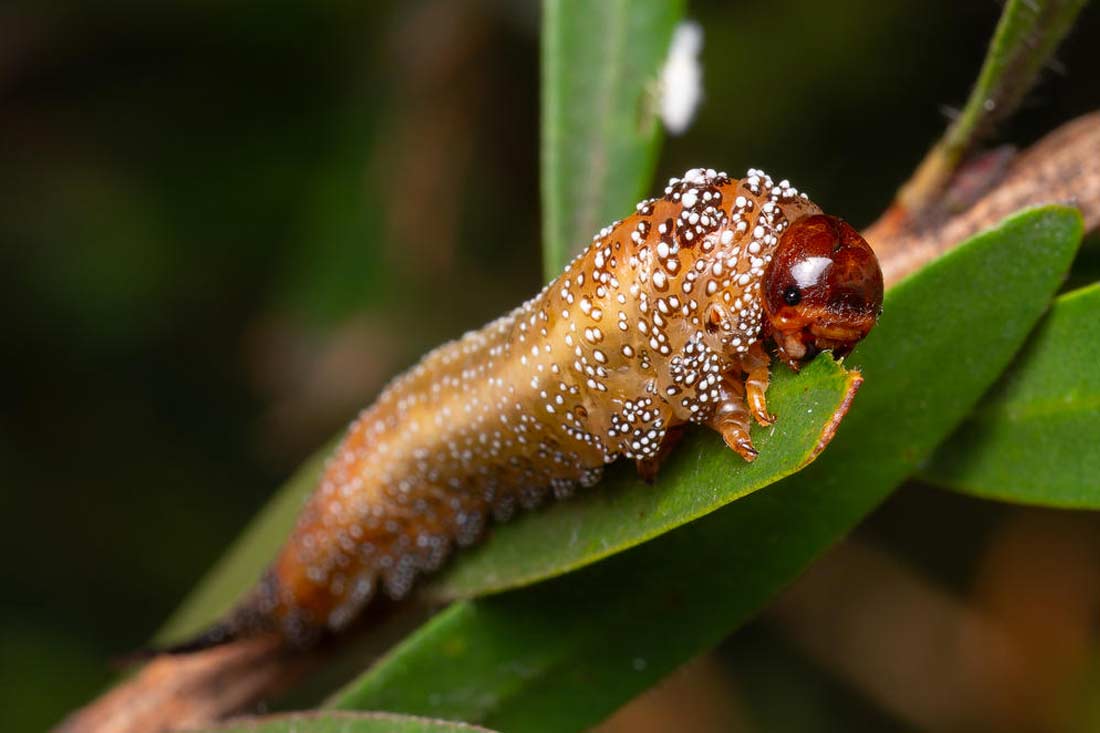
https://www.deviantart.com/strictfunctor/art/Bottlebrush-Sawfly-Larva-1008823889
What’s Wrong With My Bottlebrush Tree?
To begin, let’s go over a few signs and symptoms that could be present in your bottlebrush tree or shrub.
- Wilted Leaves: Drooping or wilting foliage may indicate issues with water uptake, nutrient deficiencies, or environmental stress.
- Lack of Flowering: A noticeable absence of blooms, especially during the tree’s typical flowering season, signifies potential health or environmental challenges.
- Pest Infestations: The presence of pests like scale insects, caterpillars, or aphids on leaves or bark can compromise the tree’s health.
- Discoloured Vegetation: Yellowing, browning, or spotting on leaves may suggest nutrient deficiencies, disease, or improper environmental conditions. Yellow, orange, red or purple fungal signs on leaves and stems can indicate myrtle rust, a significant plant health concern.
- Stunted Growth: Slow or limited growth compared to usual patterns can signal underlying issues affecting the tree’s development. This could be due to stem girdling from an old tie, water/nutrient issues, poor planting, poor soil, lack of sunlight, lack of root volume, or a myriad of other causes.
- Leaf Drop: Excessive shedding of leaves, especially outside the normal seasonal shedding, may point to stress or health problems.
- Bark Damage: Cracks, lesions, or abnormal changes in the bark texture could indicate diseases, pests, or environmental stressors impacting the tree.
- Abnormal Growth Patterns: Twisted or distorted branches, abnormal shoot growth, or leaf deformities can be signs of physiological stress, pests or disease.
- Reduced Vigour: Overall lack of vigour, including pale or dull foliage, diminished growth rate, and general decline in tree health, indicates struggling health. This is often due to environmental stresses, planting too deeply or overwatering.
What Am I Doing Wrong?
In this section, we’ll discuss what your bottlebrush plant needs in order to revive. It’s not your fault that your bottlebrush is looking lacklustre, but it is your responsibility to provide the proper care.
-
- Overwatering: Excessive moisture in the soil can lead to root rot, compromising the tree’s ability to absorb nutrients and water effectively. This can be due to over-irrigation, rainfall events, and poor drainage.
- Underwatering: Insufficient watering can result in wilted foliage, reduced flowering, and overall stress on the tree due to dehydration. This can be due to overly free-draining soil, which can be amended with organic matter, water crystals and/or kaolin clay.
- Poor Drainage: Inadequate drainage can cause waterlogging around the roots, leading to suffocation, root rot, and other moisture-related issues.
- Nutrient Deficiencies: Lack of essential nutrients such as nitrogen, phosphorus, or potassium can manifest as leaf discolouration, stunted growth, and diminished flowering. Don’t be shy in feeding your callistemons – just because they’ll tolerate poor conditions, doesn’t mean they won’t do better with some love. Feed them with a regular NPK ratio fertiliser such as compost, fish emulsion, worm castings, manure, etc. They don’t need a “native” fertiliser.
- Pest Infestations: Attacks from pests like scale insects, caterpillars, or aphids can damage leaves, disrupt growth, and weaken the tree’s overall health.

If your leaves look like this, don’t worry too badly. This is scale insect pest damage, and in low numbers like this they’re providing more benefits than negatives by attracting predatory and parasitoid beneficial insects. https://commons.wikimedia.org/wiki/File:Scale_insect_damage_on_Paperbark_Bottlebrush_(5273227242).jpg
- Disease: Fungal infections, bacterial diseases, or viral pathogens can cause leaf spots, cankers, dieback, and other symptoms that compromise the tree’s vitality.
- Improper Pruning: Incorrect pruning techniques or timing can stress the tree, affect its shape, and reduce flowering potential if done excessively.
- Environmental Stress: Extreme temperatures, frost, strong winds, or prolonged drought conditions can stress bottlebrush trees, affecting their growth and blooming.
- Soil pH Imbalance: Soil that is too acidic or alkaline can impact nutrient availability, affecting the tree’s ability to thrive and flower optimally.
- Root Damage: Physical damage to roots during planting, digging, or maintenance activities can impede the tree’s ability to uptake water and nutrients effectively. Recent landscaping works, foot traffic, vehicles, and other causes of soil compaction can severely damage roots and impair their ability to repair and gather resources.
What Can I Do About It?
Hopefully now you know why your bottlebrush is lacklustre. In this section, we’ll learn what you can do to revive your callistemon.
Pruning
Consider pruning your bottlebrush tree after late spring or summer flowers to stimulate new growth and maintain its shape. Removing wilted flowers encourages fresh blooms, while regularly eliminating suckers from the trunk prevents overcrowding.
Remove crossing branches that rub on each other, dead/damaged/diseased branches, as well as “competing” branches which grow straight up – only the trunk should do this. Ideally, all branches face outward in a healthy tree or shrub.
With most trees, it’s best to avoid over-pruning all in one go. You’re much better off pruning a little bit a couple of times per year rather than waiting 10 years to prune, and then giving it a hard cut because this stresses the plant.
With that being said, callistemons can take a pretty hard cut and you can even prune them at the base in late winter. This is called coppicing, and they’ll usually resprout in the new growing season. Some varieties are better able to be coppiced than others.
Watering
Ensure your bottlebrush tree receives ample water, especially during hot summer months. Deep watering sessions, allowing water to penetrate the roots deeply, can revive a struggling tree. Mulch around the base retains moisture effectively.
Fertilisation
Feed your bottlebrush tree with an organic fertiliser to supply essential nutrients for growth and recovery. Avoid over-fertilisation, as it may impede flowering and burn foliage. Contrary to popular belief, bottlebrushes do not require a native fertiliser.
Sunlight Exposure
Bottlebrush trees generally thrive in full sun. Guarantee adequate sunlight exposure to foster healthy growth and vibrant blooms. They won’t be happy with less than six hours of direct sunlight each day.
Drainage
Proper drainage helps to prevent waterlogging, which can lead to root rot. Ensure good drainage to maintain the overall health of the tree. The easy answer is to install a drain to remove water from the site, however, water is a resource that you’d do well to store in the soil. Learn about Water Sensitive Urban Design (WSUD) or Sustainable Drainage Systems (SuDS) for more information.
Correct Planting
Improper planting is a common cause of plant health issues. Ensure roots are in the ground and stems and leaves are in the air. Avoid burying the tree too deeply or exposing roots above the soil. If you don’t have the right plant in the right place, it’s time to replace it with a better option for the space.
Mulching Technique
Apply mulch evenly around the tree’s base, avoiding piling against the trunk. Mulch aids in retaining moisture, regulating soil temperature, and reducing weed competition for improved tree health. At Ozbreed, we recommend chunky mulch which has better porosity for air and water.
Pest and Disease Management
Regularly inspect the tree for pests or diseases. Promptly treat any issues to prevent further damage, using the least harmful methods first. Prioritise an Integrated Pest Management approach. In case of myrtle rust infection, complete shrub removal may be necessary to protect nearby plants. There are myrtle rust resistant callistemon varieties you can replace them with.
Seasonal Care
Adjust your care routine with the seasons. Modify watering, pruning, and fertilisation schedules to meet the tree’s changing needs throughout the year. For example, you can fertilise in early spring and autumn, turn the irrigation up as the weather warms and turn the irrigation down as the weather cools – especially if it rains in winter where you live.
Patience and Care
Plants may require time to recover. Be patient with your bottlebrush tree and maintain consistent care, including watering, fertilisation, and monitoring for any health changes. You may not see any major signs of improvement until next spring.
Monitoring and Record-Keeping
Keep a gardening journal to track interventions and observe the tree’s responses over time. Monitoring growth patterns, flowering cycles, and signs of distress offers valuable insights into the tree’s health status.
Conclusion
I hope this article has helped you figure out some terminology to describe your bottlebrush’s symptoms, the reasons why it’s looking lacklustre, and what you can do to revive it.
If you found this article helpful, have a read through our other articles. You might just find a few more answers you’ve been looking for.

